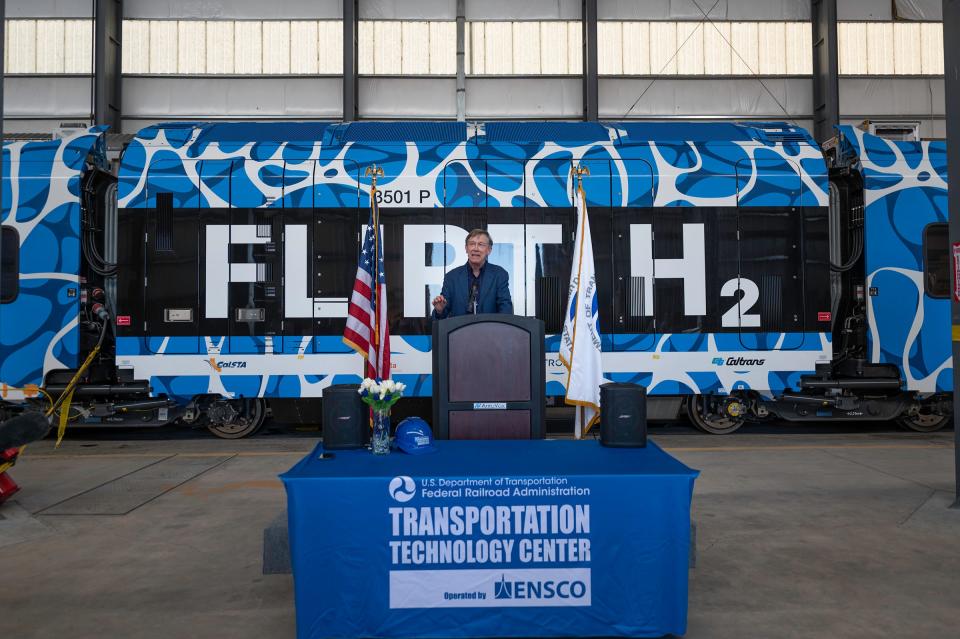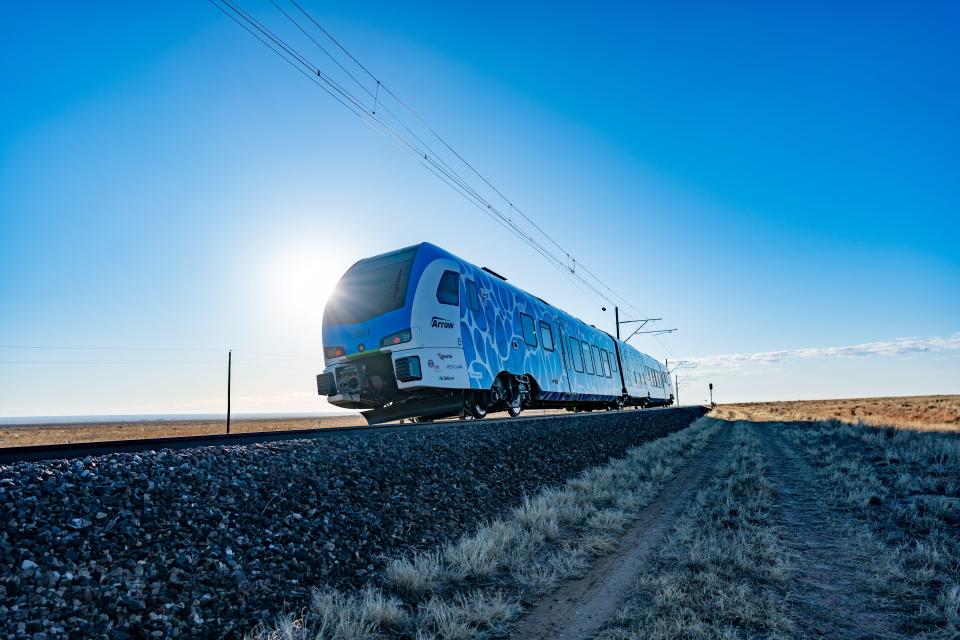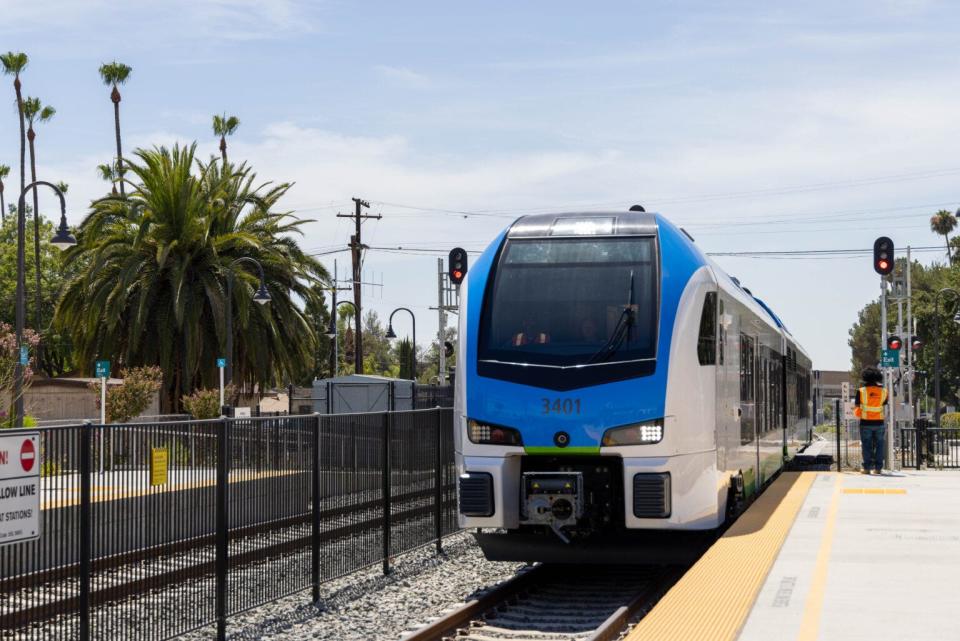Could hydrogen-powered train tested in Pueblo offer preview of passenger rail's future?
A first-in-the-nation train has been tested near Pueblo for months and will soon be heading to its new home base in California.
Stadler, a Swiss-based company, has designed and built the first hydrogen-powered train certified for passenger rail in the United States. This train has been tested at the Transportation Technology Center outside of Pueblo, where it set a new Guinness world record after traversing over 1,700 miles on a test track without refueling.
Several top officials at multiple levels of government have toured the facility and taken a test ride on the train before it heads to California.
Here’s what we know about the train and what it could mean for the future of passenger rail.

What is the hydrogen-powered train?
Companies have been developing hydrogen-powered trains for at least the past two decades.
Another company started running a hydrogen-powered train in Germany in 2018, but the Stadler passenger train is the first in the United States that’s been certified by the Federal Railroad Administration.
Stadler first constructed the train destined for California at a facility in Switzerland, then transported it across the Atlantic Ocean, according to company spokesperson Charlotte Thalhammer. Testing has been underway in Pueblo County for months and more testing is planned in California.
The train is powered by hydrogen fuel cells that “convert hydrogen into electricity,” Thalhammer said. Stadler reconfigured the framework for the locomotive from another train design.
The train can operate all day without refueling, Thalhammer said.

Why the hydrogen train has been tested in Pueblo
Ron Lang is a project manager for ENSCO, the company that now operates the Transportation Technology Center. The train-testing center in the Pueblo area is one of the biggest in the world.
Lang told reporters during a visit with local officials that construction started on the facility in 1971.
Pueblo was selected as an ideal location because of its relatively flat landscape, the ease of excavating for building tracks, and its “almost perfect” weather.
“There's only about six days a year that we can’t go out to the track and test,” Lang said.
How a transit agency in California will use the train
San Bernardino County is the largest county by land area in the continental United States, spanning from the western suburbs of Los Angeles to California’s border with Nevada.
A regional passenger rail system called Metrolink already connects some stations in Southern California, but the San Bernardino County Transit Authority and Metrolink added a new 9-mile line between downtown San Bernardino and Redlands University that opened in 2022.
Trains on the new Arrow line already use a relatively eco-friendly diesel engine. The SBCTA received an initial $30 million grant in 2018 from the California State Transportation Authority to explore a more environmentally friendly fuel.

“It was really out of the desire to address the air quality challenges of Southern California, still adding more transit or passenger rail options, but in the cleanest way possible,” Tim Watkins, the chief of legislative and public affairs for the SBCTA, told the Chieftain.
The hydrogen train, which is expected to arrive in the early summer, will be tested for at least a few months before it's operational.
Lessons for the future of passenger trains
Hydrogen trains are still new in development and can be more expensive than conventional locomotives.
Passenger train infrastructure is already extensive in some other parts of the world. For example, in much of western Europe, passenger train tracks are electrified and can support trains speeding up to 200 miles per hour.
Adding electricity to train tracks can be another costly investment, Thalhammer said, but hydrogen- and battery-powered trains can be a more cost-effective option for trains to run on cleaner power.
A spokesperson for Colorado Gov. Jared Polis said in an emailed statement that the governor wants to make passenger rail linking Front Range cities “a reality for Coloradans” to reduce highway congestion, improve air quality and help the state reach climate goals.
“Innovative technology such as the hydrogen fuel cell train tested right here in Colorado is a part of the future of clean transportation across the Front Range,” the statement said.
Anna Lynn Winfrey covers politics at the Pueblo Chieftain. She can be reached at awinfrey@gannett.com. Please support local news at subscribe.chieftian.com.
This article originally appeared on The Pueblo Chieftain: Why an innovative hydrogen-powered train has been tested in Pueblo

